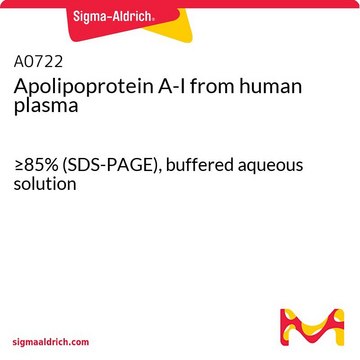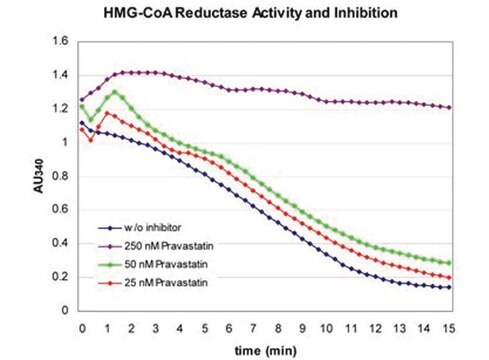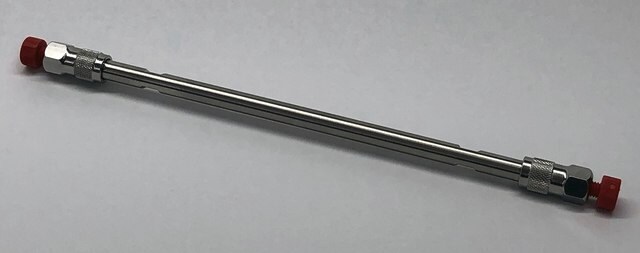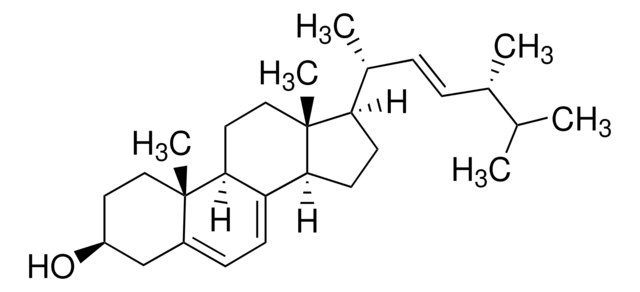A7910
Apolipoprotein C-II from human plasma
≥95% (SDS-PAGE)
About This Item
Productos recomendados
biological source
human
Quality Level
assay
≥95% (SDS-PAGE)
form
powder
mol wt
average mol wt 8.8 kDa
technique(s)
ligand binding assay: suitable
UniProt accession no.
storage temp.
−20°C
Gene Information
human ... APOC2(344)
General description
Application
Biochem/physiol Actions
Storage Class
11 - Combustible Solids
wgk_germany
WGK 3
flash_point_f
Not applicable
flash_point_c
Not applicable
Certificados de análisis (COA)
Busque Certificados de análisis (COA) introduciendo el número de lote del producto. Los números de lote se encuentran en la etiqueta del producto después de las palabras «Lot» o «Batch»
¿Ya tiene este producto?
Encuentre la documentación para los productos que ha comprado recientemente en la Biblioteca de documentos.
Artículos
Since cholesterol is a water-insoluble molecule it must be packaged for transport within the plasma. The particles that package cholesterol, cholesteryl esters, and triglycerides for transport, are called lipoproteins.
Nuestro equipo de científicos tiene experiencia en todas las áreas de investigación: Ciencias de la vida, Ciencia de los materiales, Síntesis química, Cromatografía, Analítica y muchas otras.
Póngase en contacto con el Servicio técnico







